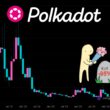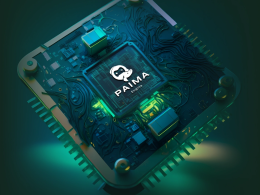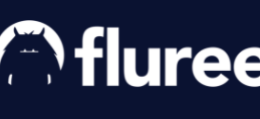As blockchain becomes mainstream, most people navigating both Web 2 and Web 3 find it difficult to follow the solutions provided by crypto projects. A working infrastructure system is needed to help users understand and better navigate the complex intricacies of crypto companies.
An infrastructure system maintains and coordinates access to novel use cases on a network while developing the code to build on them, metrics and analytics, the platform to access them, development tools, container services, and community support.
Cardano’s Robust Infrastructure Ecosystem
Cardano infrastructure providers establish and provide direct infrastructure access to customers such as building security features, maintaining servers, and operating data centres. Part of the Cardano Infrastructure Ecosystem is their Builder Tools section that help infrastructure projects build on Cardano. The teams within this section provide a collection of tools to simplify typical operations to help the community interact with the Cardano network.
Compared to other networks, Cardano stands out through its tool stack generated and maintained by the community that aims at accelerating dApp development by providing better and more reliable solutions for developers and third parties alike. This tool stack also features smart contract functionality that increases the diversity of options available for developers to build solutions on Cardano.
The Cardano Infrastructure Ecosystem is a versatile, multi-business avenue for technological innovation that increases, deepens, and improves products to help users interact better with blockchain.
Leading Cardano Infrastructure Devs
Oura
Considered as the tail of Cardano, Oura is a tool for developers, pool operators, and anyone exploring the Cardano blockchain who knows what they’re looking for.
The tool is a rust-native implementation of a pipeline that connects to the tip of a Cardano node through a combination of Ouroboros mini-protocol, filters the events that match a particular pattern and then submits a succint, self-contained payload to pluggable observers called “sinks”. In essence, this is a tool that processes information from certain events in stages and each stage fulfils its specific purpose.

Oura in a nutshell
Oura’s use cases include:
- Command line interface (CLI) to view transactions live
- As a bridge to other persistence mechanisms
- As a custom action trigger
- As a library for custom scenarios
- Windows (experimental)
- Scraping metadata
Tangocrypto
Tangocrypto provides high availability APIs and developer tools for fast and reliable access to the Cardano network that requires only 1 minute to integrate. The project lowers the entry barrier for developers onto Cardano by providing them with easy-to-use API and reliable infrastructure to help them focus on building their business model and growing next-generation software.
It only takes 5 minutes for a developer to start using the Tangocrypto platform since Tango API is free and self-service, so all you need to do is choose your tier, sign-up, then start using the developer platform. To start building in 5 minutes is further made easy by the platform’s support of a free tier that promotes easy and free onboarding.
Tangocrypto’s solution sits on top of Cardano and will provide the following components:
- HTTP API
- Notify
- Monitor
- Query Composer
AdaDomains
AdaDomains is the first domain-based project on Cardano.
This project provides a unique opportunity for users to own custom .ada blockchain domain as a native NFT on Cardano. This enables users to send payments directly to a domain instead of a wallet address.
To maintain the uniqueness of each domain, they have built an on-chain domain registry to keep track of all minted domains. The registry system is designed to be dynamically scalable to keep the transaction fees low even with an increased number of new domains.
AdaDomains will include a domain tokens feature that will interact with their smart contracts to provide user functionality like sending and claiming payments, modifying stored data, minting sub-domains and much more. This means that every domain is represented as an NFT (non-fungible token) and can be freely traded on the market.
Scrolls
Scrolls is a tool for building and maintaining read-optimized collections of Cardano’s on-chain entities. The tool deep dives the chain’s history and aggregates all data to reflect the updated state of affairs. After processing the whole history, Scrolls watches the tip of the chain to keep the collections up-to-date.

How Scrolls works
Scrolls has excellent tools such as Kupo, dcSpark’s Carp or Db-Sync. On Scrolls, even the Cardano node itself might work as a source for some of the collections.
Every tool on Scrolls is architected with a set of well-understood trade-offs which include:
- Network storage over local storage
- Read latency over data normalization
- Data cache over data source
- Rust over Haskell
- Bring your own db, that is, storage mechanisms in Scrolls are pluggable
dcSpark
dcSpark builds high-quality crypto products that unify the user experience within blockchain ecosystems. To provide a seamless experience for users making their first step int the blockchain world, dcSpark focuses on interoperability and composability on the backend.
The dcSpark team has years of experience building in the Cardano ecosystem with notable projects such as the Flint community wallet and Milkomeda (novel protocol empowering leading blockchains with EVM support) in their basket. Prior to dcSpark, the team led the development of Yoroi wallet and the Cardano serialization library.
The current dcSpark products include:
- Milkomeda: delivers rollup technologies to leading Layer 1 ecosystems by offering the most popular smart contracting language, Solidity, while enhancing inter-blockchain interoperability, user experience, and developer traction all at the Layer 2 level.
- Flint: wallet for DeFi and NFTs.
- Urbit Visor / UV Ecosystem: an extension which transforms your web browser into a first class Urbit client. Its goal is to allow existing web tech to seamlessly integrate together with the novel functionality of Urbit.
- Carp: a new indexer for Cardano that saves its data to a Postgres database (SQL)
dcSpark are crypto ecosystem builders aiming to boost adoption and chain interoperability by building critical products that move the Cardano network to the next level. They achieve this by developing their own libraries and components for producing products and open source these libraries to the community.
Blockfrost
Blockfrost is a gateway to the Cardano ecosystem that provides an instant and scalable Cardano API for free. The project is founded by Marek Mahut, one of the longest standing members in the Cardano community, that operated Cardano’s Five Binaries. From Five Binaries came Blockfrost to contribute to the creation of APIs for Cardano decentralized blockchain. The platform provides abstraction between developers and blockchain data, taking away the burden of complexity, so they can focus on developing Cardano dApps.
Some of the features of Blockfrost include:
- Provision of an API to access and process information stored on the Cardano blockchain
- A free basic tier to nurture development and growth of the Cardano ecosystem
- Allows 50,000 requests per day
Blockfrost is an instant, highly optimized, public and freely accessible API as a Service that serves as an alternative access to the Cardano blockchain and related networks through which developers don’t need to maintain additional infrastructure and tooling themselves.
Looking Forward
The Cardano Infrastructure Ecosystem is as divergent as it is complex, with each platform building its own significant imprint. The infrastructure journey starts with tools, then products follow, and in the end the platforms provide support to dApps on the Cardano network.
This infrastructure ecosystem accelerates dApp development on the Cardano network by providing working solutions to developers and third parties interested in building on Cardano. By having qualified projects provide a blueprint for project functionality, developers have multiple options to build socially impactful dApps on Cardano.
Image courtesy of pixabay










